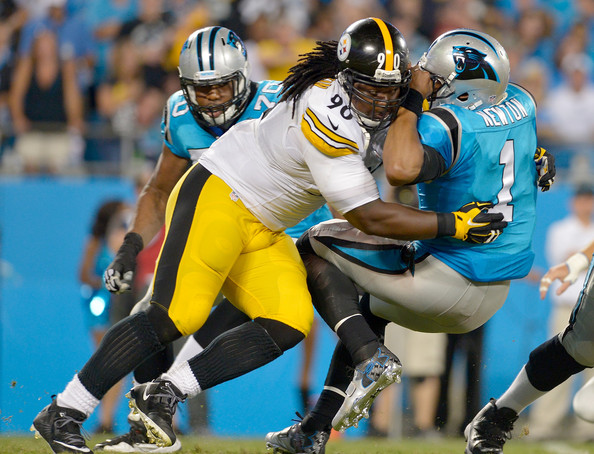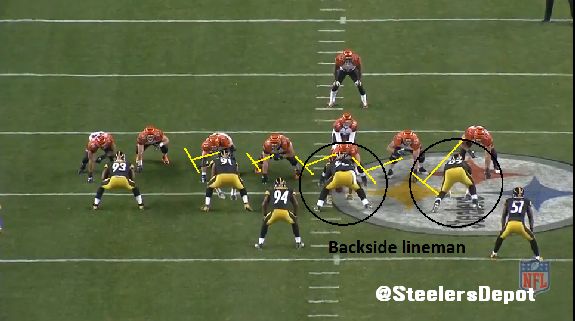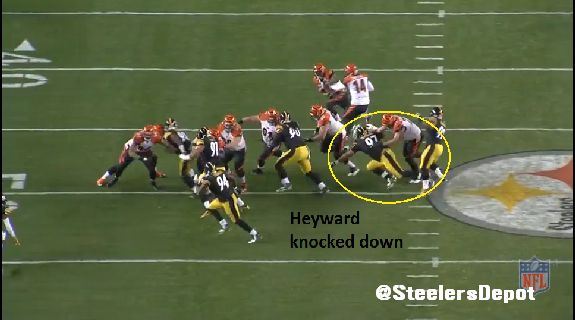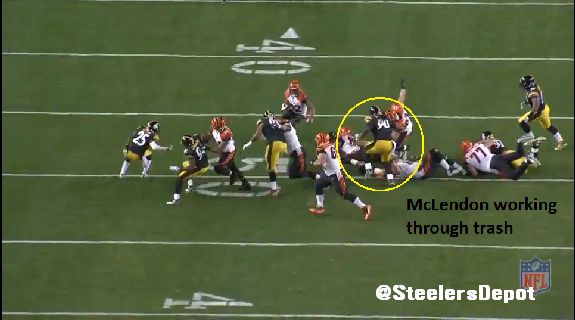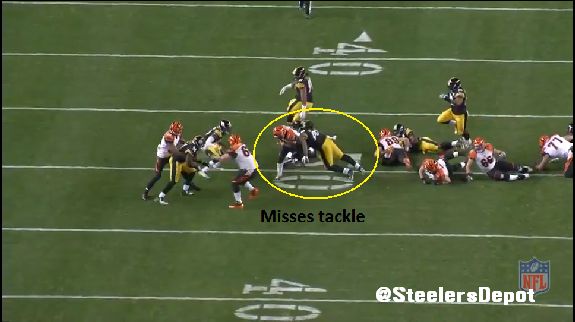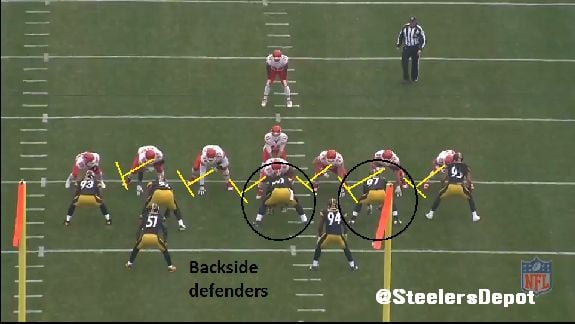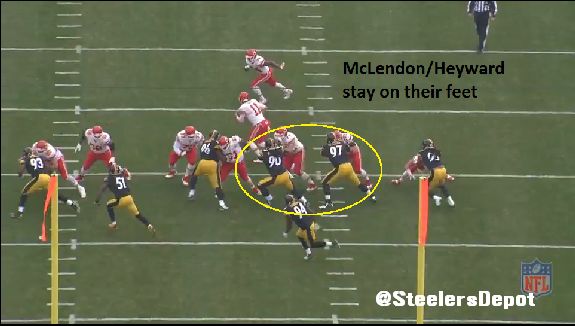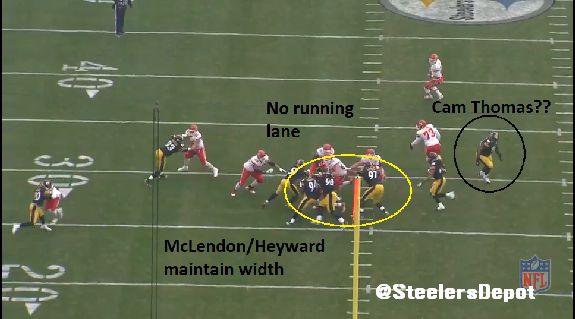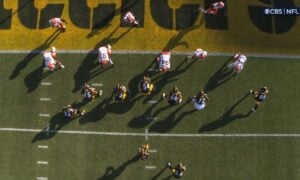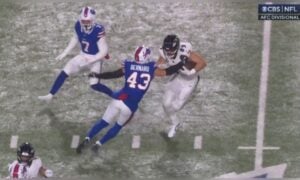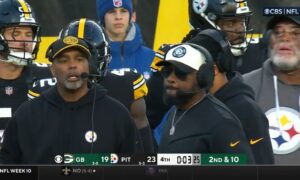Back at the tape today with a small, but important, breakdown of how defenses successfully play the run. Zone blocking schemes are mixed into every team’s playbook. Pittsburgh Steelers’ fans specifically are well accustomed to seeing them as the Cleveland Browns, Cincinnati Bengals, and Baltimore Ravens use it heavily, though as an aside, the Bengals seemed to go back to more power running in 2014.
A critical component to defending zone runs are the backside defenders. If they flow with the run, they’ll squeeze the runner and take away his cutback lanes. If they can’t stay on their feet or are late, they’ll create huge holes that will strain second and third level defenders.
Below, we’ll briefly show two examples. What happens when it goes right. And what happens when it doesn’t.
We’ll start with the latter. Week 17 against the Bengals. Jeremy Hill reels off a 22 yard run into Steelers’ territory.
Zone stretch to the right. Steve McLendon and Cam Heyward are the backside lineman.
Almost immediately, Heyward is knocked to the ground by the combination of left tackle Andrew Whitworth’s block and friendly fire via James Harrison.
McLendon has slightly better luck, managing to stay on his feet, but has to work over the cut block of the left guard. It slows him up.
It’s difficult to do but as a defense, you want to keep the same width between your lineman that existed pre-snap. When that spacing widens, it creates gaps in the defense they can’t account for. McLendon doesn’t and isn’t able to close the gap as Hill plants and gets north, just missing the tackle. Splash play for the Bengals.
On the other end of the spectrum, even when the front side fails, proper backside pursuit can make up for it. A week prior against the Kansas City Chiefs. Again, it’s McLendon and Heyward giving chase.
I don’t want him to be the focal point of the conversation, but Cam Thomas takes a false step and winds up getting ridden out of this play. Remarkable how he ends up more out of position than the backside outside linebacker.
If it wasn’t for the backside flow, the Steelers would be in a lot of trouble.
But Heyward and McLendon stay on their feet, maintain their pre-snap spacing, and clog the running lanes. Sean Spence sheds his block to knife through and drop Knile Davis.
Of course, the front side is challenged with an equally difficult task. Getting out onto the edge, keeping the run inside, and spilling it back. But without backside help, there will always be huge cutback lanes that any running back worth a contract are going to detect. And will make any work by the frontside, even if they do their job perfectly, meaningless.
It’s why the nose tackle position has and will continued to evolve, the need for quick-footed lineman who can flow laterally and stay on his feet.
Want to know why John Mitchell cares so much about staying on your feet and running to the ball? Defending wide zone runs are the best examples I could give.

